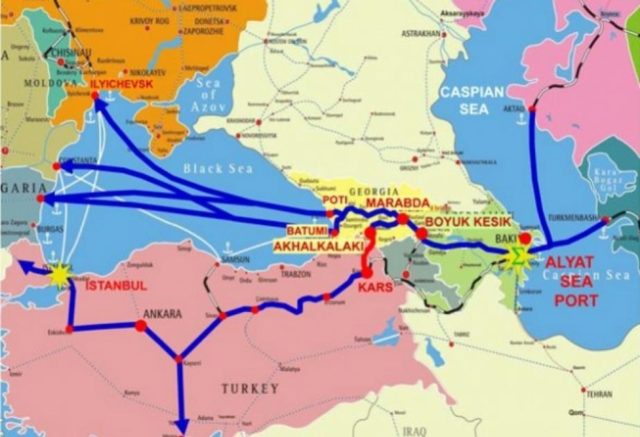As the world is anxiously watching events unfolding in Ukraine and the Middle East, and supply chains around the world come under unprecedented pressure, one transport route is quietly positioning itself as a potential savior. The Middle Corridor, also known as the Trans-Caspian International Transport Route, is a multimodal network connecting China to Europe via Kazakhstan, the Caspian Sea, Azerbaijan, Georgia and onwards to Europe via Türkiye or the Black Sea.
Although the Middle Corridor has been around for a long time, it has received new impetus in light of the geopolitical turmoil of recent months. With the closure of traditional routes through Russia and Ukraine, countries are looking for alternative routes for their goods, and the Middle Corridor is ideal for this purpose. It offers a shorter and safer route than sea transport and is a viable alternative to the Northern Corridor, which runs through Russia.
Recent studies by such organizations as the EBRD, OECD and the World Bank have identified a number of benefits of the Middle Corridor. Compared to sea freight, the Middle Corridor can reduce shipping times from China to Europe by several weeks. While land routes have traditionally been more expensive than sea routes, rising fuel prices and supply chain disruptions have made the Middle Corridor more competitive. The main advantages include increased security: the Middle Corridor passes through relatively stable countries, which reduces the risks associated with piracy, political instability and other factors.
However, as the IMF notes, a number of improvements need to be made to fully realize the potential of the Middle Corridor. As such, measures are needed to streamline procedures at border crossings to reduce delays, enhance automation through the digitalization of transport documents, and harmonize regulatory requirements, permits, and tariffs across Middle Corridor countries.







